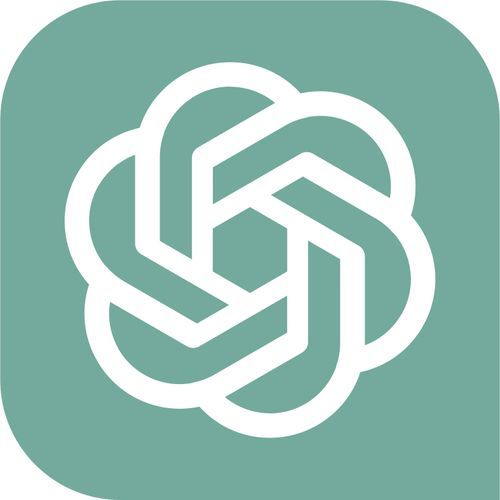Library of teambuilding games & icebreakers


Lightning hunt
In lightning hunt, players race to find specific household items and show them on camera. It’s fast-paced, and a great way to get everyone moving and laughing as they scramble to find the most random things lying around their homes.This game is perfect for injecting some spontaneity into your virtual meetings. Plus, it’s always fun to see what odd items people can dig up at a moment’s notice!
Lightning hunt
In lightning hunt, players race to find specific household items and show them on camera. It’s fast-paced, and a great way to get everyone moving and laughing as they scramble to find the most random things lying around their homes.
This game is perfect for injecting some spontaneity into your virtual meetings. Plus, it’s always fun to see what odd items people can dig up at a moment’s notice!
How to play:
- The host calls out specific household items.
- Players race to find and show the items on camera.
- The fastest player to find each item wins a point!
Gallery



Video


Around-the-office craft challenge
This is perfect if you don’t plan to leave the office for your meeting or event. Have people break into pairs and then create a craft from materials they find around the office. They should try to be really innovative and come up with the best creation that they can - having a prize can help with this. You might be surprised at the great items they come up with, like a suncatcher made from coffee filters and highlighters. If you want to combine an icebreaker with this exercise, assign pairs randomly so that people will work alongside someone they don’t see very often. It provides the perfect opportunity for getting to know someone better.
Around-the-office craft challenge
How to play
This is perfect if you don’t plan to leave the office for your meeting or event. Have people break into pairs and then create a craft from materials they find around the office. They should try to be really innovative and come up with the best creation that they can - having a prize can help with this. You might be surprised at the great items they come up with, like a suncatcher made from coffee filters and highlighters. If you want to combine an icebreaker with this exercise, assign pairs randomly so that people will work alongside someone they don’t see very often. It provides the perfect opportunity for getting to know someone better.
Gallery



Video


Descriptive artist
Searching for another indoor team-building game that demonstrates the virtue of clear communication? Try this one. To play Descriptive Artist, start by pairing teammates up and giving each duo some paper, a pencil, and a picture (making sure only one of them sees the picture). Sitting back-to-back, one person describes the image while the other tries to draw it based on that description! After 5 to 10 minutes, the activity ends and the artist has to guess what they’ve drawn. You’d then tell everyone to swap roles, hand out new pictures, and repeat the process.
Descriptive artist
Searching for another indoor team-building game that demonstrates the virtue of clear communication? Try this one. To play Descriptive Artist, start by pairing teammates up and giving each duo some paper, a pencil, and a picture (making sure only one of them sees the picture).
Sitting back-to-back, one person describes the image while the other tries to draw it based on that description! After 5 to 10 minutes, the activity ends and the artist has to guess what they’ve drawn. You’d then tell everyone to swap roles, hand out new pictures, and repeat the process.
Gallery



Video


Travel back in time…
In this creative exercise, ask everyone to imagine that they are able to travel back in time to a singular event. Where would they go, and why? Most important: what would they change? What would they make sure was done differently? And, with those differences, what would the outcomes be? Would our lives be different today if their version of events had happened? In business, an important part of strategy is thinking multiple steps ahead, and understanding “if this/then that”. This exercise asks everyone to think ahead about various repercussions of certain events. It’s a great game to play if you want to flex those strategic muscles, and also leads to some really interesting conversations.
Travel back in time…
How to play Travel back in time…
In this creative exercise, ask everyone to imagine that they are able to travel back in time to a singular event. Where would they go, and why? Most important: what would they change? What would they make sure was done differently? And, with those differences, what would the outcomes be? Would our lives be different today if their version of events had happened?
In business, an important part of strategy is thinking multiple steps ahead, and understanding “if this/then that”. This exercise asks everyone to think ahead about various repercussions of certain events. It’s a great game to play if you want to flex those strategic muscles, and also leads to some really interesting conversations.
Gallery



Video


Compliment train
This simple no-prep activity keeps the aim of positive reinforcement and maximizes a productive atmosphere. It is so simple it can be run during a virtual water cooler chat. Each person in the group simply chooses one other attendee, and then that person chooses someone who hasn’t been complimented yet and tells them something positive they’ve done.The effectiveness of this simple activity comes from the fact the complimenting is done at a peer-to-peer level, rather than from management.
Compliment train
How to play Compliment train
This simple no-prep activity keeps the aim of positive reinforcement and maximizes a productive atmosphere. It is so simple it can be run during a virtual water cooler chat. Each person in the group simply chooses one other attendee, and then that person chooses someone who hasn’t been complimented yet and tells them something positive they’ve done.
The effectiveness of this simple activity comes from the fact the complimenting is done at a peer-to-peer level, rather than from management.
Gallery



Video


Group exercise
Some of the best energizers are also the simplest. Case in point? Exercise. Well-known to perk you up, improve your mood, and make you feel more alert, getting the body moving can work wonders in the workplace.
Group exercise
Some of the best energizers are also the simplest. Case in point? Exercise. Well-known to perk you up, improve your mood, and make you feel more alert, getting the body moving can work wonders in the workplace. There are all sorts of ways to use exercise to your advantage too.
How to do group exercise
- Go for a short walk as a team each afternoon
- Encourage everyone to do some simple stretches/exercises at their desk
- Go into the hallway and run relay races together
- Clear a space and run around the office for 5 minutes, dropping to the floor to do certain exercises (e.g. push-ups, squats, or burpees) every 20 seconds
However you incorporate exercise into the workday, it’s almost guaranteed to have positive effects on people’s energy levels. Stress relief, improved physical health, and stronger social ties are a few other benefits to look forward to.
Gallery



Video


Community service
Team-building doesn’t only need to be about silly games. Sometimes, you strengthen your team while contributing something valuable to your local community.
Community service
Team-building doesn’t only need to be about silly games. Sometimes, you strengthen your team while contributing something valuable to your local community.
Great for: Company culture, company perception, job satisfaction
Duration: 2–3 hours
You’ll need: N/A
How to start:
- Consult your team about the type of community service they’d like to get involved with. It could be anything from a beach cleanup to helping out at an animal shelter.
- Once you’ve settled on an activity, reach out to your chosen organisation and inform them you’d like to offer a helping hand.
- Don’t forget to document the event by taking photos or making a video—these images will make additions to your employee breakroom!
Gallery



Video


Flag rush
Ready for some outdoor action? In flag rush, teams compete to capture the opposing team’s flag without getting tagged. It’s all about strategy, speed, and staying out of sight—until it’s time for that final dash to the flag!It’s a great way to get everyone moving, thinking on their feet, and diving into some friendly competition. Plus, who doesn’t love a good old-fashioned game of capture the flag?
Flag rush
Ready for some outdoor action? In flag rush, teams compete to capture the opposing team’s flag without getting tagged. It’s all about strategy, speed, and staying out of sight—until it’s time for that final dash to the flag!
It’s a great way to get everyone moving, thinking on their feet, and diving into some friendly competition. Plus, who doesn’t love a good old-fashioned game of capture the flag?
How to play:
- Split into two teams, each with a flag to protect.
- Try to capture the other team’s flag while avoiding getting tagged.
- First team to grab the flag and return it to base wins!
Gallery



Video


Safety storyboard
Provide employees with materials to create storyboards that illustrate a safety scenario and its resolution. Display the storyboards and have a voting process to select the best ones. Offer prizes for the top storyboards.Safety storyboards combine creativity with safety awareness, making it an engaging way to discuss and visualize safety procedures. It encourages employees to think through safety scenarios and communicate them effectively. Plus, it’s a fun and artistic activity.
Safety storyboard
How to play:
Provide employees with materials to create storyboards that illustrate a safety scenario and its resolution. Display the storyboards and have a voting process to select the best ones. Offer prizes for the top storyboards.
Safety storyboards combine creativity with safety awareness, making it an engaging way to discuss and visualize safety procedures. It encourages employees to think through safety scenarios and communicate them effectively. Plus, it’s a fun and artistic activity.
Gallery



Video


Storytelling Circle
Sit in a circle and start a story with a few sentences. Each person adds a sentence to continue the story, building upon the previous contributions.
Storytelling Circle
How to play:
Sit in a circle and start a story with a few sentences. Each person adds a sentence to continue the story, building upon the previous contributions.
Materials needed: None
Benefits:
- Enhanced communication skills: Your team will be able to improve their ability to listen and build upon the ideas of others. It's like a symphony of words, where everyone gets a chance to play their unique melody.
- Team synergy on steroids: Witness the magic of teamwork as your team's contributions harmonize into a cohesive storyline. It's like a literary potluck where each person brings their secret ingredient to create a masterpiece.
Gallery



Video


The personal Kanban game
Taking the principles of Kanban we learned earlier, now is a great time to make a personal version that prioritizes focus and streamlines workloads. Kanban boards are usually used for team projects but work just as well for a single person. This activity reinforces the Kanban concept: tracking work in stages to keep workflow steady.
The personal Kanban game
Taking the principles of Kanban we learned earlier, now is a great time to make a personal version that prioritizes focus and streamlines workloads. Kanban boards are usually used for team projects but work just as well for a single person. This activity reinforces the Kanban concept: tracking work in stages to keep workflow steady.
Set up:
Each person needs a basic Kanban board, either on a physical whiteboard or on their computer. Each board needs three columns, just keep it basic for the first version. Try “To Do,” “In Progress,” and “Done.” Get them to write every task for that day or week onto a sticky note (electronic ones are available too) and move each one slowly onto the board. Encourage them to keep a holistic view, so as not to overload the “in progress” section. Simple activities like this can help staff who may feel overloaded. Ask everyone to reflect afterward on how their tasks are managed, and record the insights.
Gallery



Video


Human spring
The Human Spring teaches participants the value of trust, cooperation, and interdependence – three core qualities of effective teams. If your workforce appears divided, there’s been recent conflict, or levels of collaboration seem to be dwindling, then we highly recommend it!
Human spring
The Human Spring teaches participants the value of trust, cooperation, and interdependence – three core qualities of effective teams. If your workforce appears divided, there’s been recent conflict, or levels of collaboration seem to be dwindling, then we highly recommend it!
Here’s how to play:
Divide the team into pairs (consider doing this for them in order to break up the usual cliques and encourage mingling), ensuring that partners are of a similar size.
Next, ask the pairs to face each other and put their hands up, with their elbows bent, and palms facing the other person. They then have to put their palms together (i.e. person A’s palms should be touching person B’s) and lean towards each other, bit by bit, until they’re holding one another up.
That’s the easy bit! The real challenge comes next, when they have to start moving their feet further and further back, while keeping their palms together.
The beauty of this exercise is that each rearward shuffle makes it harder to stay upright without the support of their partner.
Eventually, their feet should be so far back that they’re relying solely on their teammate to stay upright. The pair with the greatest distance between their feet is the winner. They should then swap partners and do it all again!
What you need:
- N/A
Gallery



Video


Don’t answer that
Fun and laughter are guaranteed with Don’t Answer That. A verbal exercise this time, all participants have to do is stand in a circle asking each other questions!
Don’t answer that
How to play Don’t answer that
Fun and laughter are guaranteed with Don’t Answer That. A verbal exercise this time, all participants have to do is stand in a circle asking each other questions! As you’d expect, though, there’s a caveat…
You don’t answer the questions directed at you.
The person standing to your left does it instead. For example, imagine that James asks you, “What’s the most embarrassing moment of your life so far?” You’d have to stay silent while Jeanette – the person to your left – claims it was when you got drunk at the last Christmas party and told the CEO you loved her.
The idea isn’t necessarily to be truthful (although it isn’t a rule that you can’t be!). The goal is simply to have a good time, make people laugh, and lift the mood.
Gallery



Video


Human objects
As we’ve seen already, miming actions is a common component of improv games. However, so too is imitating objects! In Human objects, your employees have to use their bodies to impersonate a given item. You can be sitting in a circle or walking around the room – it doesn’t matter. The main thing is that there’s enough space for everyone.
Human objects
As we’ve seen already, miming actions is a common component of improv games. However, so too is imitating objects!
How to play Human objects
In Human objects, your employees have to use their bodies to impersonate a given item. You can be sitting in a circle or walking around the room – it doesn’t matter. The main thing is that there’s enough space for everyone.
From there, all you have to do is call out an object.
It can be anything you want! From vases and coffee cups to pairs of scissors and laptop computers, the items can be big, small, and everything in-between. Whatever you yell out, though, each participant has to put their arms, legs, and torsos into positions that resemble it.
As you can imagine, this game’s great fun. But it’s effective too. It forces your employees to think outside the box and displays how differently people can think about the same problem. The team will see how their colleagues approach the task, learning more about each other and forming closer bonds in the process.
That’s an invaluable lesson when it comes to collaboration. After all, it shows that not everyone thinks in the same way! If you’re going to solve problems and work well together, you have to play to people’s individual strengths, respect their perspectives, and empathize at every step.
Gallery



Video


Employee beach day
At the office, heavy workloads and busy schedules can prevent friendships from blossoming. Therefore, from time to time, it’s critical to leave the hubbub of the office behind and escape to the beach for some well-earned chill time.
Employee beach day
At the office, heavy workloads and busy schedules can prevent friendships from blossoming. Therefore, from time to time, it’s critical to leave the hubbub of the office behind and escape to the beach for some well-earned chill time.
Great for: Interpersonal relationships, stress reduction
Duration: As long as you like!
You’ll need: Various beach games like frisbee, volleyball, etc.
How to prepare:
- Mark a day in your employees' calendar for a relaxing beach day. It could be a one-off event, or you could integrate recurring beach days as part of your employee benefits package.
- Head to the beach for a day of tanning, beach games and swimming. If there are waves in your region, you could arrange for your team to join a surf lesson!
Gallery



Video


River crossing
This game involves solving a hypothetical challenge. For this game, two teams work together to collect planks and get everyone in their group across a river. The trick is that the planks are magic and sink when not in contact with a person. This is a good way to facilitate critical thinking and work together as a team.
River crossing
How to play River crossing
This game involves solving a hypothetical challenge. For this game, two teams work together to collect planks and get everyone in their group across a river. The trick is that the planks are magic and sink when not in contact with a person. This is a good way to facilitate critical thinking and work together as a team.
Gallery



Video


Hybrid art collage
Office workers create physical art while remote team members work on digital designs. Then, both pieces are merged into a single, collaborative masterpiece.In the hybrid version, office workers can get hands-on with paints, paper, or any materials lying around the office to create their part of the art piece. Meanwhile, remote team members work their digital magic—whether it’s on Photoshop, Canva, or even just a doodle on Paint. The real fun comes when both pieces are combined and displayed on a shared platform like Teams or Slack. The end result is a cool, hybrid art collage that blends physical and digital creativity. It's a fun way to bring both worlds together and see how different styles come together!
Hybrid art collage
Explanation:
Office workers create physical art while remote team members work on digital designs. Then, both pieces are merged into a single, collaborative masterpiece.
In the hybrid version, office workers can get hands-on with paints, paper, or any materials lying around the office to create their part of the art piece. Meanwhile, remote team members work their digital magic—whether it’s on Photoshop, Canva, or even just a doodle on Paint. The real fun comes when both pieces are combined and displayed on a shared platform like Teams or Slack. The end result is a cool, hybrid art collage that blends physical and digital creativity. It's a fun way to bring both worlds together and see how different styles come together!
Gallery



Video


Wheelbarrow Races
Fun Field Day games for adults don’t get much better than wheelbarrow races. It’s another activity you may remember fondly from childhood – a silly, light-hearted, and surprisingly physical race where teams of two use their bodies to form the shape of a wheelbarrow! Here’s how it works: The group divides into pairs, with one player as the “wheelbarrow” and the other as the “driver” Whoever is the wheelbarrow lies face down on the ground as if they’re going to do a push-up Whoever is the driver then takes the wheelbarrow’s feet in their hands, lifting their legs up at the same time as their partner pushes up with their hands The resulting pose resembles someone pushing a wheelbarrow! However, instead of having wheels, the person in front (i.e., the wheelbarrow) uses their hands/arms to move while the driver walks forward normally. As for the race itself, you set a start and end point and get everyone to line up in position. When the whistle blows, they have to walk/run together as fast as possible to the finish! Once there, they swap roles and then race back to the start. The first pair to complete both journeys wins.
Wheelbarrow Races
Fun Field Day games for adults don’t get much better than wheelbarrow races. It’s another activity you may remember fondly from childhood – a silly, light-hearted, and surprisingly physical race where teams of two use their bodies to form the shape of a wheelbarrow!
Here’s how it works:
- The group divides into pairs, with one player as the “wheelbarrow” and the other as the “driver”
- Whoever is the wheelbarrow lies face down on the ground as if they’re going to do a push-up
- Whoever is the driver then takes the wheelbarrow’s feet in their hands, lifting their legs up at the same time as their partner pushes up with their hands
The resulting pose resembles someone pushing a wheelbarrow! However, instead of having wheels, the person in front (i.e., the wheelbarrow) uses their hands/arms to move while the driver walks forward normally.
As for the race itself, you set a start and end point and get everyone to line up in position. When the whistle blows, they have to walk/run together as fast as possible to the finish! Once there, they swap roles and then race back to the start. The first pair to complete both journeys wins.
Gallery



Video


Vocabulary chain
For this game, the only thing needed is an extensive vocabulary and a desire to have fun. It can also be a really fun way to learn new things and impress your colleagues. You never know who is going to introduce you to an amazing new word! This is also a virtual-team friendly activity. You might add this game to other virtual team-building activities.
Vocabulary chain
For this game, the only thing needed is an extensive vocabulary and a desire to have fun. It can also be a really fun way to learn new things and impress your colleagues. You never know who is going to introduce you to an amazing new word! This is also a virtual-team friendly activity. You might add this game to other virtual team-building activities.
To play:
- First, choose a topic. It could be anything from “animals” to “our company vendors” - it just needs to be broad enough for some traction in the game.
- Team members must name things that fit within that topic - but the key is, their word needs to begin with the last letter of the former word. For example, if your topic is animals, and someone says “beaver”, then the next person could say “rat” (because it begins with r) and the next person could say “tiger”, and on it goes.
- Go around the group naming things that fit in the topic until everyone has had a chance to contribute.
- If you do happen to have a piece of paper, you can make sure you’ve covered every letter of the alphabet. The simplest way to do that is to write out the alphabet in advance, and then cross off the letters as they are used in words. Again, this is optional, though. More important than using the whole alphabet is making sure everyone gets a chance to contribute.
Gallery



Video


How to implement insights (following event)
If you want to go beyond recall, have each person describe how they will implement what they learned in their daily lives and tasks. Hearing important concepts is one thing; knowing how you can practically apply them is something else!
How to implement insights (following event)
How to implement insights (following event)
If you want to go beyond recall, have each person describe how they will implement what they learned in their daily lives and tasks. Hearing important concepts is one thing; knowing how you can practically apply them is something else!
Gallery



Video


Product descriptions
Choose a random item within your reach and give each player up to 60 seconds to pitch to other participants.
Product descriptions
For this game, you need a large space to accommodate everyone.
Here is what to do:
- Have all players get together and form a circle.
- Choose a random item within your reach and give each player up to 60 seconds to pitch to other participants.
- Have everyone focus on the notable features and try not to repeat a sellable attribute that another participant mentions.
- Any player who cannot remember a feature within 60 seconds leaves the game.
- The last standing player is the winner.
Gallery



Video


Online training courses
Expressing gratitude to employees by offering them continuing education through online training courses can be a great way to foster a positive work culture and boost employee morale. By offering to fund workshops and classes, employees can refine their skills and be better equipped to do their work. Communication and de-escalation course Emotional Intelligence Training Team building methods Diversity and Inclusion Training Leadership Development Mindfulness and stress reduction Many of these courses are found on popular online learning platforms like Coursera, edX, and Udemy. If your team prefers an in-person learning session, contact professional development and HR organizations for tailored training programs. Tailoring your training to your organization's specific needs and culture is essential for practical gratitude expression.
Online training courses
Expressing gratitude to employees by offering them continuing education through online training courses can be a great way to foster a positive work culture and boost employee morale. By offering to fund workshops and classes, employees can refine their skills and be better equipped to do their work.
- Communication and de-escalation course
- Emotional Intelligence Training
- Team building methods
- Diversity and Inclusion Training
- Leadership Development
- Mindfulness and stress reduction
Many of these courses are found on popular online learning platforms like Coursera, edX, and Udemy. If your team prefers an in-person learning session, contact professional development and HR organizations for tailored training programs. Tailoring your training to your organization's specific needs and culture is essential for practical gratitude expression.
Gallery



Video


Lunchtime picnic
Lunch breaks present an excellent team-bonding opportunity that many managers fail to capitalise on. By organising regular lunchtime picnics, you encourage your employees to spend time getting to know each other outside of the office.
Lunchtime picnic
Lunch breaks present an excellent team-bonding opportunity that many managers fail to capitalise on. By organising regular lunchtime picnics, you encourage your employees to spend time getting to know each other outside of the office.
Great for: Interpersonal bonding, well-being
Duration: 30 minutes
You’ll need: N/A
How to organise:
- Outdoor company picnics are, of course, weather dependent, so look at the forecast at the start of the week and determine the best day and location for a picnic.
- Mark the chosen day on the calendar in the staff room or send a group email to notify your team.
- On the day of the picnic, provide essential items such as blankets, picnic baskets, sunscreen etc.
Gallery



Video


Red ball game
A group of people pass around an imaginary red ball and must come up with a story about where it has been. You can change the color of the ball or even the imaginary object, the point is to mix up the start and stop of the story and get creative.
Red ball game
How to play Red ball game
A group of people pass around an imaginary red ball and must come up with a story about where it has been. You can change the color of the ball or even the imaginary object, the point is to mix up the start and stop of the story and get creative.
Gallery



Video
















